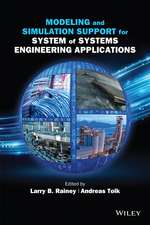Technical Functions: On the Use and Design of Artefacts: Philosophy of Engineering and Technology, cartea 1
Autor Wybo Houkes, Pieter E. Vermaasen Limba Engleză Paperback – 28 mai 2012
| Toate formatele și edițiile | Preț | Express |
|---|---|---|
| Paperback (1) | 551.32 lei 38-45 zile | |
| SPRINGER NETHERLANDS – 28 mai 2012 | 551.32 lei 38-45 zile | |
| Hardback (1) | 641.03 lei 6-8 săpt. | |
| SPRINGER NETHERLANDS – 14 apr 2010 | 641.03 lei 6-8 săpt. |
Din seria Philosophy of Engineering and Technology
- 9%
 Preț: 627.13 lei
Preț: 627.13 lei -
 Preț: 378.64 lei
Preț: 378.64 lei - 15%
 Preț: 662.95 lei
Preț: 662.95 lei -
 Preț: 280.88 lei
Preț: 280.88 lei - 15%
 Preț: 646.75 lei
Preț: 646.75 lei - 24%
 Preț: 806.76 lei
Preț: 806.76 lei - 18%
 Preț: 1110.86 lei
Preț: 1110.86 lei -
 Preț: 392.97 lei
Preț: 392.97 lei - 18%
 Preț: 958.07 lei
Preț: 958.07 lei - 15%
 Preț: 645.28 lei
Preț: 645.28 lei - 15%
 Preț: 644.63 lei
Preț: 644.63 lei -
 Preț: 394.12 lei
Preț: 394.12 lei -
 Preț: 393.52 lei
Preț: 393.52 lei - 15%
 Preț: 638.90 lei
Preț: 638.90 lei - 15%
 Preț: 660.04 lei
Preț: 660.04 lei - 15%
 Preț: 654.43 lei
Preț: 654.43 lei - 15%
 Preț: 646.43 lei
Preț: 646.43 lei - 18%
 Preț: 788.90 lei
Preț: 788.90 lei - 15%
 Preț: 646.75 lei
Preț: 646.75 lei -
 Preț: 370.49 lei
Preț: 370.49 lei -
 Preț: 387.78 lei
Preț: 387.78 lei - 18%
 Preț: 735.07 lei
Preț: 735.07 lei - 18%
 Preț: 956.18 lei
Preț: 956.18 lei - 15%
 Preț: 637.59 lei
Preț: 637.59 lei - 18%
 Preț: 1009.40 lei
Preț: 1009.40 lei - 18%
 Preț: 787.91 lei
Preț: 787.91 lei - 15%
 Preț: 638.89 lei
Preț: 638.89 lei - 20%
 Preț: 566.76 lei
Preț: 566.76 lei - 18%
 Preț: 725.43 lei
Preț: 725.43 lei
Preț: 551.32 lei
Preț vechi: 689.16 lei
-20% Nou
Puncte Express: 827
Preț estimativ în valută:
105.50€ • 112.81$ • 87.96£
105.50€ • 112.81$ • 87.96£
Carte tipărită la comandă
Livrare economică 14-21 aprilie
Preluare comenzi: 021 569.72.76
Specificații
ISBN-13: 9789400731974
ISBN-10: 9400731973
Pagini: 184
Ilustrații: VIII, 174 p.
Dimensiuni: 155 x 235 x 10 mm
Greutate: 0.27 kg
Ediția:2010
Editura: SPRINGER NETHERLANDS
Colecția Springer
Seria Philosophy of Engineering and Technology
Locul publicării:Dordrecht, Netherlands
ISBN-10: 9400731973
Pagini: 184
Ilustrații: VIII, 174 p.
Dimensiuni: 155 x 235 x 10 mm
Greutate: 0.27 kg
Ediția:2010
Editura: SPRINGER NETHERLANDS
Colecția Springer
Seria Philosophy of Engineering and Technology
Locul publicării:Dordrecht, Netherlands
Public țintă
ResearchCuprins
Chapter 1 Introduction.- Chapter 2 Use, plans and designing.- 2.1 Artefacts and actions.- 2.2 Use plans.- 2.3 Planning in use.- 2.4 Designing plans.- 2.6 Standards for use plans.- 2.7 Evaluating artefact use and design.- Chapter 3 Function theories.- 3.1 Function theories for technical artefacts.- 3.2 The intentional function theory.- 3.3 Cummins.causal-role theory of functions.- 3.4 The evolutionist function theory.- 3.5 Combining the basic theories.- 4.1 A use-plan approach towards functions.- 4.2 Function ascriptions.- 4.3 Assessing the function ascriptions.- 4.4 Functional roles.- Chapter 5 Malfunctioning.- 5.1 The phenomenon of artefact malfunctioning.- 5.2 Having capacities versus exercising them.- 5.3 Artefact normativity.- Chapter 6 Engineering, science and biology.- 6.2 Engineering.- 6.3 Physics and chemistry.- 6.4 Biology.- 6.5 A biological and generalised ICE-theory.- Chapter 7 The nature of artefacts.- 7.1 Functions as conceptual drawbridges.- 7.2 Against function essentialism.- 7.3 Plan relativism.- 7.4 Useful and man-made materials.
Textul de pe ultima copertă
This first book-length study in the philosophy of technical artefacts and their technical functions presents a new action-theoretical account of using and designing called the ICE theory. This theory connects the material side of technical artefacts with the aims of everyday users and the tasks of engineers when designing for those everyday users.
Wybo Houkes and Pieter Vermaas have developed ICE theory in close contact with the engineering literature on designing and the literature on functions in the philosophy of biology and philosophy of mind. As such the book is a telling example of the successful new school of philosophy of technology that is aimed at understanding engineering and technology on their own merits.
The book presents the reader with a broad and detailed understanding of technical artefacts and their functions, which is sensitive to the dynamic and socially structured practices of using and designing. This understanding shows how our technology-saturated everyday life can be subjected to rigorous philosophical analysis, and how artefacts and technical functions provide an area of inquiry that is equally fascinating as, but genuinely different from, biological items and their functions.
Wybo Houkes and Pieter Vermaas have developed ICE theory in close contact with the engineering literature on designing and the literature on functions in the philosophy of biology and philosophy of mind. As such the book is a telling example of the successful new school of philosophy of technology that is aimed at understanding engineering and technology on their own merits.
The book presents the reader with a broad and detailed understanding of technical artefacts and their functions, which is sensitive to the dynamic and socially structured practices of using and designing. This understanding shows how our technology-saturated everyday life can be subjected to rigorous philosophical analysis, and how artefacts and technical functions provide an area of inquiry that is equally fascinating as, but genuinely different from, biological items and their functions.
Caracteristici
First book-length study of technical artefacts and their functions State-of-the-art resources in analytical philosophy, such as the planning theory of action and analyses of testimony Provides a framework for describing and evaluating artefact use and design First and only theory of artefact functions that is faithful to the phenomenology of artefact use Positioning of the functions of artefacts against those of biological items Typical example of the new school of philosophy of technology that studies engineering and technology on its own merits

























